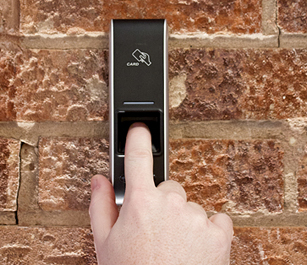Time to update the way employees access your premises
As you may recall from our article on the history of access control, the term access control technically still encompasses old-fashioned methods such as locks, keys and safes.
However, most modern uses of the term refer to more sophisticated barriers, with much more high-tech ways of being opened than a mere key. The access control market is estimated to be worth around £10 billion by 2020, and is currently growing by 10% year on year.
The most basic type of access granting equipment is the smartcard. This has many advantages over the old-fashioned key. For example, if it is stolen, a key will open the lock that it was made to fit, unless that lock is changed. This can be expensive for affected companies. Keys can also easily be copied, meaning that every time a key leaves the premises a breach is risked.
A smartcard’s information is much more difficult to copy. If it is reported as stolen or lost, the profile attached to that card can immediately be deleted. This means that the card no longer works to get through its assigned doors and is useless to a thief. The employee who possessed that smartcard can quickly and easily be assigned a new one. There is no need to replace any other element of the system.
If someone does manage to obtain a card that they should not have access to (e.g. a salesperson gaining an IT card for the server room) then an uncharacteristic usage of that card may still alert the security forces.
This is related to the other big disadvantage of a lock and key: that it does not give you much information. You may know exactly who has access to that room, but you cannot know how often it is being accessed without using another type of technology such as CCTV.
Our real-time graphical display shows doors opening and closing as it happens, recording the information to be looked at later if necessary, and our access control profiles can be changed within a minute if any suspicious activity is noticed.
Our access control system also include provision for an entry made under duress. A normal PIN can be programmed as a feature of a normal access permission, working in tandem with the smartcard, but there can also be a special duress code set up. When this is entered, the cardholder (and any potential threat) notice no difference in the way that the door opens for them, but it triggers a silent alarm and sends an alert to the necessary people.
The other method by which people can use our access control system is through their personal biometrics.
The type of biometric identification that we offer for access control is the fingerprint reader, for employers who, due to security concerns, want to be absolutely certain that the relevant person is accessing the door. The image of the fingertip pattern is converted into a code through a secure algorithm, which is then stored on a database for future comparison and authentication.
These modern methods of access control should be the minimum used by all businesses, yet many premises still rely on lock and key. Contact us on 020 8242 9695 for more information on our products and services, or by using our contact form.
